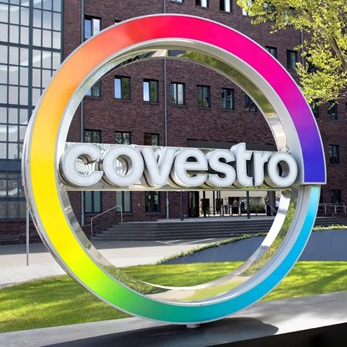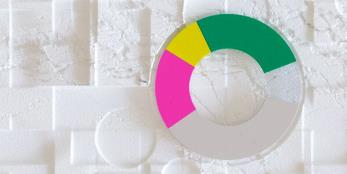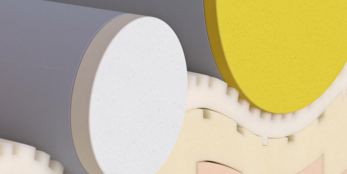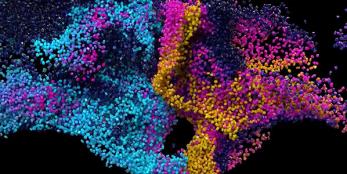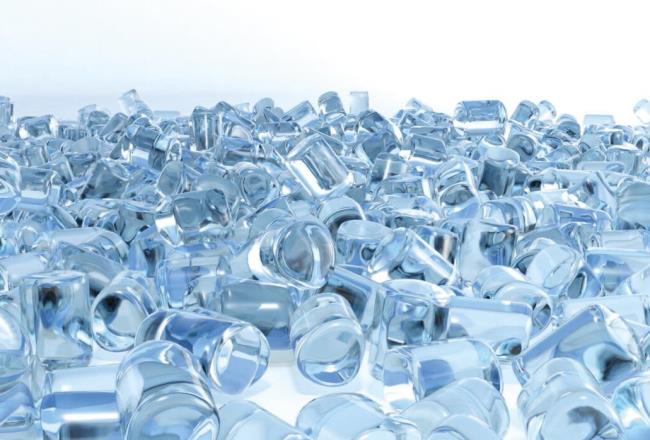
Polycarbonate built on Bisphenol A
What is the connection of PC with BPA?
Bisphenol A (BPA) is the essential monomer for producing polycarbonate (PC) by polymerization. During this step, BPA monomer molecules connect to form long PC polymer chains, except for unavoidable traces of unreacted monomer.
Thermoplastics in general are divided into two fundamental types of plastic based on their molecular structure: amorphous and semi-crystalline materials. Amorphous thermoplastics have irregular structures with bulky molecules, providing transparency and dimensional stability, but typically lack ductility and heat resistance. Semi-crystalline thermoplastics form crystalline regions within an amorphous matrix, offering ductility and heat resistance but appearing opaque.
PC is unique among amorphous thermoplastics: its BPA-based structure enables strong polymer chain interactions that combine transparency and dimensional stability with exceptional ductility, impact strength, and heat resistance. These specific properties are intrinsically linked to BPA as the monomer, and alternative building blocks would yield different material characteristics.
What are the concerns around BPA?
As PC still can emit small traces of BPA, the discussion around the safety of BPA remains relevant. BPA is the subject of unparalleled scientific attention and intense political debate. BPA has been identified as a Substance of Very High Concern (SVHC) by the European Chemicals Agency (ECHA). Identification as SVHC is a hazard-driven approach that considers only the intrinsic properties of the pure substance, independently from how it is used, for example in the PC polymer. In this respect, all high-quality, reliable studies support that BPA-based materials can be used without risk by consumers in their intended applications.
While many regulatory authorities continue to confirm that, others are driving restriction efforts based on controversial science. One example is the dispute around the 2023 opinion by the European Food Safety Authority (EFSA) on BPA.
Consumers are exposed to BPA mainly via food, at highest daily intakes around 1 µg/kg bodyweight. (1 µg/kg is one part in a billion). Canned food is the largest contributor to BPA exposure, caused by BPA-based inner coatings of cans, which is a different material class than PC. After ingestion, BPA is rapidly metabolized to an inactive form and subsequently excreted with a half-life of a few hours. Nonetheless, in the EU BPA is banned in the manufacture of food contact materials and articles since early 2025, with transition periods applying.
Largest sources of BPA found in the environment are paper recycling processes and use of recycled paper products as well as legacy waste in landfills. The contribution of PC to BPA exposure is minimal1.
This low migration of BPA from PC into the environment is minimized by protective surface treatments in several applications.
How does Covestro ensure product safety for PC?
Covestro is committed to industry standards beyond legislative requirements, such as operating its business according to Global Charter of Responsible Care®2. Covestro has implemented a practice of continuous improvements in health, environmental and safety policies and practices.
With regards to BPA, Covestro continuously assesses the benefits and potential risks of BPA for its use in PC, PC blends and PC films. A key part of the work Covestro is doing is the conduct of high-quality scientific studies, mainly together with the respective associations in particular in the EU (Plastics Europe), China (CPCIF) and the US (American Chemistry Council). This is done in collaboration with public authorities or renowned institutes such as the German Federal Institute for materials research and testing, BAM or is based on methods developed or endorsed by them (e.g. by the German Federal Environmental Agency, UBA). The results are published and made available for peer-review and scientific scrutiny.

Use of PC in different industries
The versatility of PC with its unique property profile pushes the boundaries of what's possible in design and functionality and makes PC the go-to material for visionaries and innovators in different industries.
In Automotive, PC combines aesthetic design with safety and quality, particularly for transparent and crash-relevant parts. Its impact resistance enables lightweight designs for efficient mobility, while dimensional stability and heat resistance advances battery designs for electric vehicles. PC's signal transparency is crucial for autonomous driving sensors.
In Electronics and Electrical (EE), PC meets high performance needs with innovative design for consumer products. Its flame retardancy, electrical resistance and dimensional stability ensure product safety and longevity. High flowability enables thin-wall designs, while thermally conductive options enhance device efficiency.
For Medical devices, PC provides reliability with health standard compliance. Its dimensional stability allows sterilization, while impact resistance and transparency ensure safe operation and visual verification.
In Construction, PC delivers energy-efficient, lightweight transparent roofing with excellent weathering resistance, durability and flame retardancy.
For additional information on BPA and PC, please refer to the links and related articles below.
www.aboutpolycarbonate.com
www.factsaboutbpa.com
Product Responsibility - Bisphenol A
1 Ramboll (2021). Substance Flow Analysis (SFA) and Regionalized Pathway Analysis (RPA) for Emissions of Bisphenol A (BPA) into the Environment, 2021 Update. Recently published in the peer reviewed scientific journal: Integrated Environmental Assessment and Management: http://doi.org/10.1002/ieam.4805 and http://doi.org/10.1002/ieam.4804
2 Responsible Care Global Charter - International Council of Chemical Associations (ICCA)
Key benefits
- Automotive: Transparency, impact resistance, dimension stability, heat resistance, signal transparency
- Electrics & Electronics: Flame retardancy, electrical resistance, high flow, thermal conductivity, heat resistance
- Medical: Sterilizability, heat resistance, dimension stability, transparency, impact resistance
- Building & Construction: Transparency, flame retardancy, lightweight, durability, weather resistance

